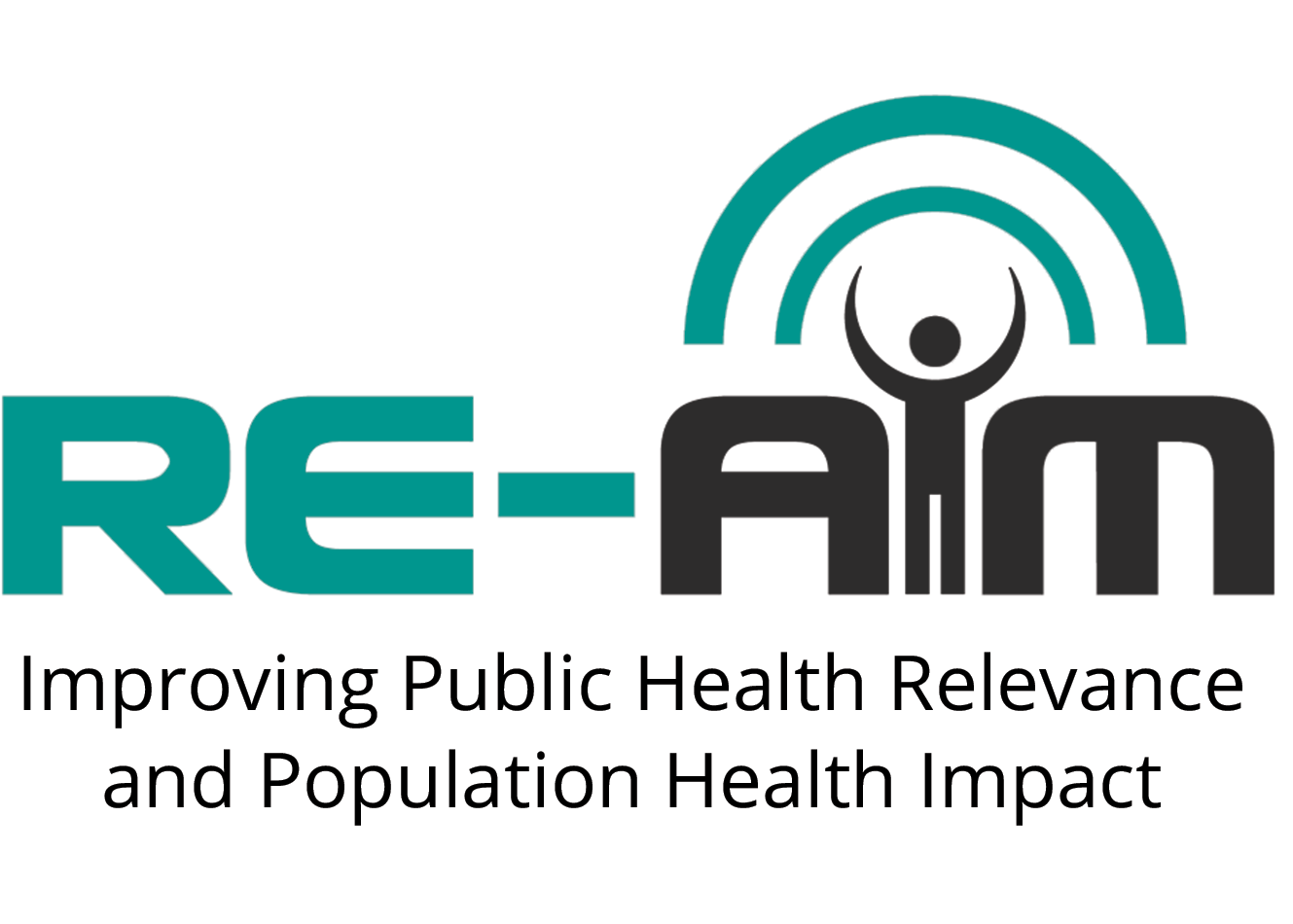Grant Writing Guidance
RE-AIM has a long history of being used as a reputable implementation framework for funding calls. This section offers guidance and considerations, along with some examples of ways in which RE-AIM has been used for grants.
Grants using RE-AIM for planning | |
Title | Guidance and considerations – includes updates/ways to further strengthen the use of the RE-AIM framework |
Title: A systems-based approach to address childhood obesity in the DRR within the context of the DRPHC
PIS: Paul Estabrooks and Jamie Zoellner This proposal used a mixed- method approach and integrated dimensions of using RE-AIM for community planning and stakeholder engagement, as well as for program evaluation. |
Excellent example of how to use RE-AIM in a planning stage.
|
Grants using RE-AIM for evaluation | |
Title: Implementing a Home Safety Toolkit for Veterans with Dementia
PI: Kathy Horvath R01-equivalent (VA Merit)
This proposal used a Hybrid Type 3 design and the RE-AIM framework to assess the success of the implementation of a Home Safety Toolkit. The grant was submitted to the VA Merit award mechanism.
| Nice table example of how to operationalize RE-AIM domains for a grant proposal on page 19. · Measure adoption in terms of the % of organizations that adopted, in addition to exploring reasons for adoption. · Measure adoption at 2 levels: o % staff that adopted o % organizations · Measure representativeness/equity of adoption · Recommended additions to the ‘I’/Implementation domain of RE-AIM: o Add implementation costs o Add measures of how the program was adapted. o Consider reporting adaptations according to a standard, published implementation science approach (e.g., FRAME, FRAME-IS or MADI). |
Title: Disseminating an Evidence-Based Tobacco Control intervention for School Teachers in India PI: Glorian C Sorensen R01
This grant used the RE-AIM framework to assess outcomes of the intervention implementation process, and also assessed the effectiveness of the program to improve tobacco policies. |
· Recommended additions to the ‘I’/Implementation domain of RE-AIM: o Add implementation costs o Consider new and evolving methods for the best practices to assess implementation costs, including assessing costs of both the intervention and the implementation strategy.
|
Title: Implementation of Evidence- based Cancer Early Detection in Black Churches PI: Cheryl L. Holt R01
This intervention was implemented in community faith-based settings, and it has a good example of application of the RE-AIM framework for evaluation. | Table 5 on page 9 is a nice example of how to operationalize RE-AIM domains. · Recommended additions: o Add representativeness/equity of adoption o Add representativeness/equity of reach o Add implementation costs o Add measures of fidelity o Add measures of how the program was adapted. o Consider reporting adaptations according to a standard, published implementation science approach (e.g., FRAME, FRAME-IS or MADI). |
- Interactive tool to consider how to apply RE-AIM to your project
- For Planning
- For use during implementation of a project
- For use to evaluate a project
Interested in guidance on getting D&I grant funding?
- The University of Colorado Adult & Child Consortium for Outcomes Research and Delivery Science (ACCORDS) website
- University of North Carolina Implementation Science Exchange Includes D&I research tools, measures, sources of evidence, and funded grant examples itemized above, as well as others.
